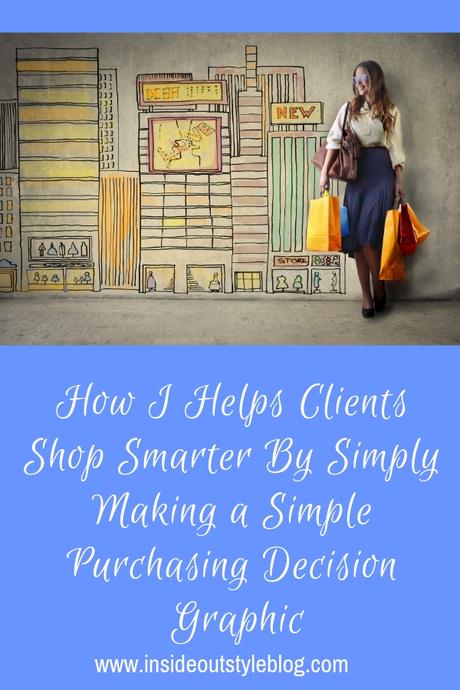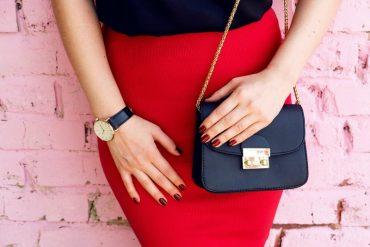Shopping mistakes around clothing are so common. Why? For a myriad of reasons that may include:
- Feeling the need to purchase to make the salesperson happy or not feel like you've wasted their time
- Feeling the need to purchase so that you justify your time and effort spent shopping (that hunter/gatherer instinct in us)
- The desire for something new (and an oxytocin hit when you buy that makes you momentarily feel good)
- The hope that this new thing will be the answer to your style/wardrobe issues
- The pressure you put on yourself to find a new outfit for that event that is looming
These reasons (and I know there are many more) are not the best reason to purchase. And if you don't have your own set of style rules or guidelines, it's very easy to make shopping mistakes that end up costing you dearly over time. Here are some questions to ask yourself before you make your next purchase.
I read a report that said that the average wardrobe is worth around $18 000 - this, of course, includes underwear, shoes, socks, coats, clothes, hats, scarves .... the list goes on (it was based on insurance claims for destroyed wardrobes). Now that's a lot of money, particularly since the average person says they wear 10-20% of their clothes 80% of the time! Now, of course, there are different seasons, so what you're wearing right now, is unlikely to be the same as what you'll be wearing in 6 months time. That said, there is probably quite a bit in your wardrobe you're really not wearing often, and possibly, some of those things are because they were poor purchasing decisions.
So rather than keeping on throwing money away on the wrong things, here is a way of empowering yourself to make great decisions when you're next shopping for clothes. Knowledge really is power in the shopping game!
1. Take Your Style Recipe
Yes, it's worth creating a style recipe - that is a set of ingredients that represent how you want to be seen, how you want to feel in your clothes, how you want to be perceived by others that express your personality. A great style recipe will tell you when something is right or wrong.
Here's an example, I was shopping with a client, and her recipe included the word "luxurious". We were looking at a range of scarves and she was trying to decide between two. All I had to say to her was "which of these says luxurious to you?" and instantly the decision became easy!
When you run your style recipe past an item of clothing it quickly becomes clear if it's right or wrong! No more It'll Do clothes for you.
2. Include your 3-5 must-haves
Yes, you need a list of what really matters to you with regards to figure and colour flattery. These are the essentials that you just won't do without. A great way of figuring out what these are is to photograph your outfits for a month, and then separate your Great outfits from your Not-So-Great outfits. Put all the photos together and study them - what do you see? What do you notice?
Note down what you like about the great outfits - the elements of design, the silhouette, colours, contrast, scale, patterns, accessories etc.
Then look at the ones that just don't hit the mark for you - what do you notice here? Why are they not quite right? What isn't working about them? Is it the fit or fabric? Is it contrast or colours? Is there something in the texture or patterns?
Knowing what does work and makes you feel and look great and also what you just want to start avoiding is really useful when out shopping.
See if you can distil this list in the 3-5 things that really really matter to you.
- What must every garment have?
- What are your essentials?
- What is it that you love and makes you look amazing?
Then also note down:
- What will you never ever do again?
- What are the mistakes you don't want to repeat?
- What are your no-no's?
Knowing what your never, ever ever things are can keep you on track too, so you don't repeat past mistakes.
3. Make sure it works with your personal clothing values
Your values are important - they guide you in your decision making. Frequently when there is a conflict between your behaviour and your values, you will get a feeling of unease and uncomfortableness (could be a physical, emotional or mental feeling).
There are a variety of style values that may be important to you - or may be irrelevant such as:
- Sensory: how the garment feels, level of comfort, nothing itchy or scratchy or without stretch or ease-of-movement
- Economical: is it good value for money? Does it represent a good use of your time, space and energy? Is it versatile?
- Aesthetic: is it beautiful? Does it make your heart sing?
- Theoretical: Is it ethically made? What is the supply chain like? Is it dry-clean or wash and wear? What fibres is it made from?
- Exploratory: is it creative or different, unique or interesting in some way? Is it unlike what others are wearing?
- Influential: Is it going to have the right impact and be appropriate and help to influence others in a positive way?
These are just a few of the 12 style values that I share and explain in my 7 Steps to Style program (where there is a quiz to help you discover your top style values), and they are something I use with every client before I ever go shopping or go through their wardrobe with them. I know that if I don't understand their style values, I can't truly help them to find the clothes that are right for them. You want personal values to be taken into account when putting together your style.
4. Make it an 8 or more!
Marie Kondo is hot right now and for some, her explanation of "sparking joy" really works. But if this language or concept doesn't work for you, why not use my Rate it an 8 or more method instead. When you're considering a purchase - ask yourself - would I rate it an 8, 9 or 10 out of 10 or not? If the answer is only a 7, 6, 5, 4 (or lower) then put it back. Why would you want to take something home that isn't great? You are better than 2nd best or 3rd best, or plain NQR (not quite right). There are lots and lots and lots of clothes out there to choose from (the world is your oyster these days with the abundance of internet shopping options, you're no longer stuck with what you can find in your location). Keep your money for something you love rather than something that isn't going to make you happy in the long run.
5. Create Your Purchasing Decision Graphic
Many of us can be quite visual, and having a visual reminder of what's important to you could be as simple as this decision graphic below.
Here we have in the middle a style recipe - BOLD, SIMPLE, COMFORT - these are the main ingredients (what they mean is something that you may have fleshed out like this).
Then there are the 3-5 things in the top row of hearts:- Design aka shape of garment that flatters your body
- Colour and contrast that flatters
- Fit (so often ignored when purchasing) yet is frequently the difference between what you wear and what sits in your wardrobe rarely if ever worn
- Feel - what does it really feel like on? Is it comfortable, does the fabric feel nice? Does it bind, itch or scratch? Is it enjoyable to feel?
- Is it good value, how will it be of service and value in your wardrobe?
- Is it versatile? Can it be dressed up and down? Does it work with multiple other items already in your wardrobe?
- Is it a wardrobe gap? Don't buy anything that doesn't fill a hole.
A simple decision graphic like this helps to remind you in the heat of the moment when you may be influenced or swayed by others or the tricks retailers use to get you to buy, to stay true to yourself and your personal style.
Rather than keeping on making the same mistakes over and over, or using someone else's formula or the latest "must have list" for putting an outfit together, it's time to develop your own decision graphic to keep you on the right track.
Further Reading to Help You Make the Best Purchasing Decisions
Get onto the Style Highway and Out of Your Style Rut with 3 Essential Questions
How to Build a Future Focused Wardrobe
Tips on How to Cultivate Your Style
How Do You Know When You've Found the One (and should stop looking)
How to Find and Develop Your Unique Style



